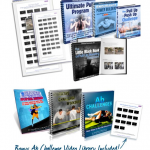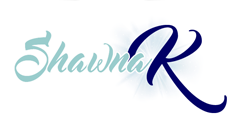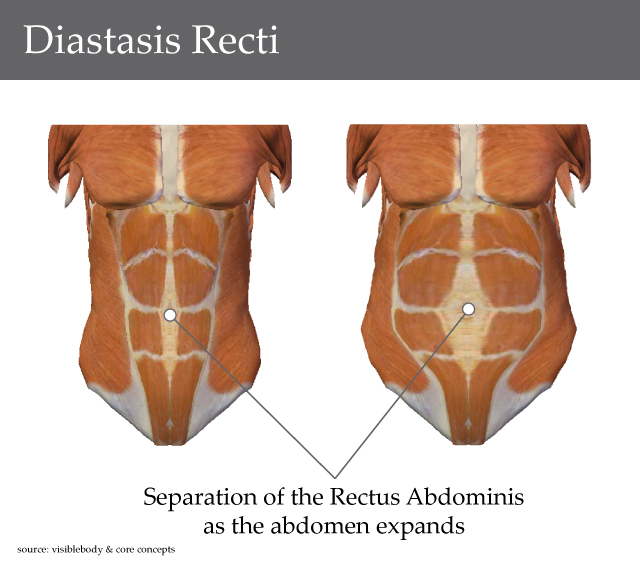I missed doing the Q and A on Friday, so here you go:

Shawna,
Do you modify your ab workout for those with diastasis recti?
Denise
Hey Denise,
For those of you that don’t know about this, the word diastasis means “separation” and ‘recti’ is the rectus abdonimis or the muscle that is down the center of the “six-pack”. Diastasis recti generally happens during pregnancy, the muscle becomes separated from the linea alba. (Diastasis is a 3-finger widths.) The linea alba is line of fibrous tissue that runs down the midline of your abdomen. It separates your rectus abdonimis muscles into a left and right side. Sometimes, as the abdomen expands, a slight separation of the muscle from the dividing tissue can occur. If you have this condition, then you should not do the traditional Core exercises. Generally, women don’t have this separation during the first trimester, but if you experience any discomfort in this area, you may want to ease up on the core exercises.
Diastasis is a 3-finger widths separation between the rectus abdominus. If you have this, you should stay away from twisting motions, planks (not modified), crunches and most traditional abdominal exercises. You will need to train the pelvic floor and transverse abdominis to re-create the strength and integrity of your core before the ab challenge exercises.
********************************************************************************************************
Shawna
Great fun these Q and A posts. I have another question: how important are the right shoes when squatting? I have read that running shoes are too cushy and raised at the heel which makes it hard to push up and out of the squat from the heels. What do you think?
Sara
Dear Sara,
Good question Sara. Shoes are pretty much mandatory in a gym setting but picking the right shoe to squat in will make a big difference. Many people wear ‘running’ type shoes with gels and raised heels. I recommend you squat in flat shoes with no heel or gel. Here’s what you want to consider:
Running shoes are:
- Unstable. Soles are ‘cushy’ as you say Sara. It’s harder to control your technique and lift with correct form.
- Power Loss. You’ll lose strength because the soles absorb the force against the floor instead of directing it towards moving the weight.
- Dangerous. The squishy soles make you less stable which can be dangerous when using heavier weights.
Flat shoes with incompressible soles like Chuck Taylors are:
- More Safety. You’ll have better balance and better technique with flat shoes.
- More Stability. With harder soles, you’ll have better traction and better balance.
- More Strength. Your legs will work harder when you have better balance and when you can feel the weight on your heels.
- Better Technique. With flat shoes, your lifting technique will be better.
My best advice is to get flat, incompressible soled shoes. The good news is that they tend to be less expensive as well. Hope that helps.
Shawna
***************************************************************************************************************
My question is:
When you say Chuck Taylors, you mean Converse All-Stars, right? And if
so, is there a preference between the hightop or the lowtop versions?
One better than the other for squats?
Sara
Sara
My biggest (actually probably smallest) supporter! Thanks for your questions.
As for your squatting shoes, high tops or low tops, it doesn’t matter that much, it’s just that the sole should be stiff. As well, I mean Converse Chuck Taylors. I prefer Pumas, but it really doesn’t matter as long as they’re solid and pretty flat.
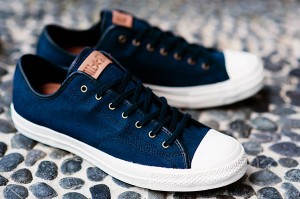
Shawna
*********************************************************************************************************
Dear Shawna
I wondered if you could help me. I tried to do stick-ups the other night, and I couldn’t get my arms anywhere near to the wall. I think i might have a muscle
imbalance. I have always done too much work on my chest and not enough on my back, is there anything I can do.
Kevin
Dear Kevin,
Yes, a lot of chest work will cause you to be very tight. I suggest you get an exercise ball, lay yourself on your back over the ball, open up your arms and relax. This is the best passive stretch for your chest that you can do.

Once you start to open up your chest, you’ll be able to get your elbows to the wall so you can do the stick up. You are correct in suggesting that you’re weak through the back. Increase back strengthening including DB rows, inverted rows, cable rows, as much back work as possible as well as the stretching of the chest muscles.
Shawna
********************************************************************************************************
Naive question from well meaning person:
Where does a fledgeling, and again, well meaning ‘exerciser’ look to find either a written description/schematic drawing/ video display of the exercises? These exercise programs look interesting and worth while, BUT the names for half the exercises mean (very embarrassed to admit) nothing to me. Any web place available to obtain more info? Perhaps you mentioned where and I neglected to notice.
Dear ‘fledgeling, well meaning ‘execiser’,
First of all, I love how you describe yourself, so funny.I understand that the names of exercises can be confusing. I have a full video library as well as a ‘Lil Black Book’ of exercises with pics/descriptions in my program.
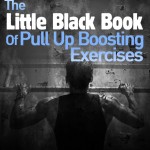
If you don’t want to commit to that, I’m sure you can You Tube each exercise and you’ll find a description or example. That takes a bit of time, but it’s doable.All the best to you as you’re off on your fitness journey, you sound like more than just a ‘semi-enjoyable’ guy 😉
Shawna
*******************************************************************************************************
Shawna,
I have 4 more workouts in your pull-up program and while I am making noticeable strength increases (I can both feel and see them!), there is no way I am going to make it to a pull-up by the end of the program. I am getting better
at the controlled descent, but instead of doing 2 sets of 10, I am only able to do 2 sets of about 5. I do the hanging leg raises not hanging, but with my forearms resting on pads. The pain I was having in my inner elbow area is gone (yeah!), but for two days I couldn’t do any controlled descents because of a sharp pain in under the right side of my rib cage, I realized I was gripping with my upper abs during the descent. I now concentrate on tightening my lower abs during descents.
Anyway…let me get to the question! When I finish the 12th workout, how would you recommend I continue? Redo the whole thing? Perhaps do the pushup program next and then come back to the pull up program? Since my starting point was one of great upper body weakness I am not disappointed about the results I have had so far. I am making great progress and want to continue toward the goal of pullups in the best way possible.
SD
Dear SD
I agree, go to the first push up program, you’ll still be increasing upper body strength, then come back to the pull up program. If you can’t do the sets as laid out yet, there’s no point in going to program two, repeat program one. You’ll continue to make progress.
I”m glad that you’re noticing strength increases, I know you work hard. It will take time. If you have an opportunity to video or take pictures of you doing a pull up, or attempting one, I can critique it for you and offer some tips. Send it on over.
Good luck,
Shawna
************************************************************************************************************
Hi Shawna,
I am doing you Pull up – Push up challenge workouts (up to workout # 4) and am just wondering what is the best size/length resistance band to get to help with the band assisted pull ups. I weigh 58kg and am 162cm tall.
Cheers,
Kerry
PS they are tough, but good. Lovin them.
Kerry,
Good question, I really enjoy using a resistance band to assist with pull ups (as in the video below). This is the band that I’ve used in the past and is a good choice:
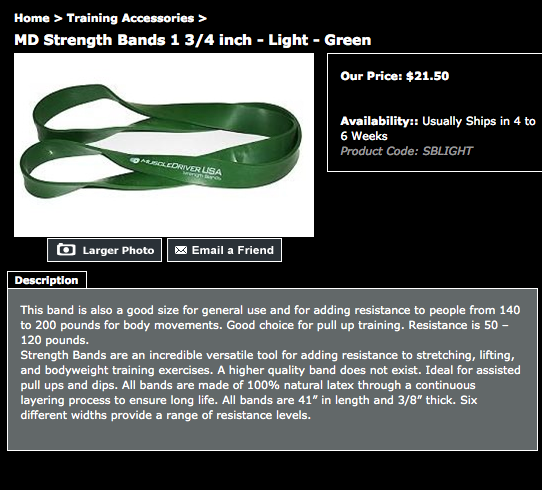
You can find this at this site:
http://www.theg2scart.com/Light_Resistance_Bands_p/sblight.htm
Hope this helps,
Shawna
***********************************************************************************************************
Hi Shawna!
First I want to say thanks for such a great workout program for increasing number of pull ups. I had a quick question for whenever you get the time to answer. Whenever I start my pullups I can always get about 10 plus reps in or so, but after my shoulders want to pull in. Should I go to forced repetitions with a kip or just let my shoulders turn inward? If I pull my shoulders back and lift my head up, I can get about 10 more partial reps where I feel it working my lats still. Your thoughts?!
Thank you!
Hey SE,
This is a great question. It’s much better to kip and use the muscles of the back versus inwardly rotating the shoulders to get a few extra reps. By kipping, you’ll actually strengthen the muscles needed to improve your pull up power, by inwardly rotating your shoulders, you’re putting your shoulder joint at risk.
Check out this video where I show you the kip:
Keep your questions coming and great job on the pull ups!
Shawna
Just a reminder that MONDAY is the last day to purchase my program for only $19.99. You’ll also get three extra bonuses. It works out to 6 programs, two exercise libraries and two video exercises libraries. It’s hard to beat a price like this….I decided to keep the sale going for the weekend because I got so many requests. But that’s it, price doubles Monday night at midnight and the bonuses go away. Grab your copy and start YOUR pull up challenge on this holiday Monday.
